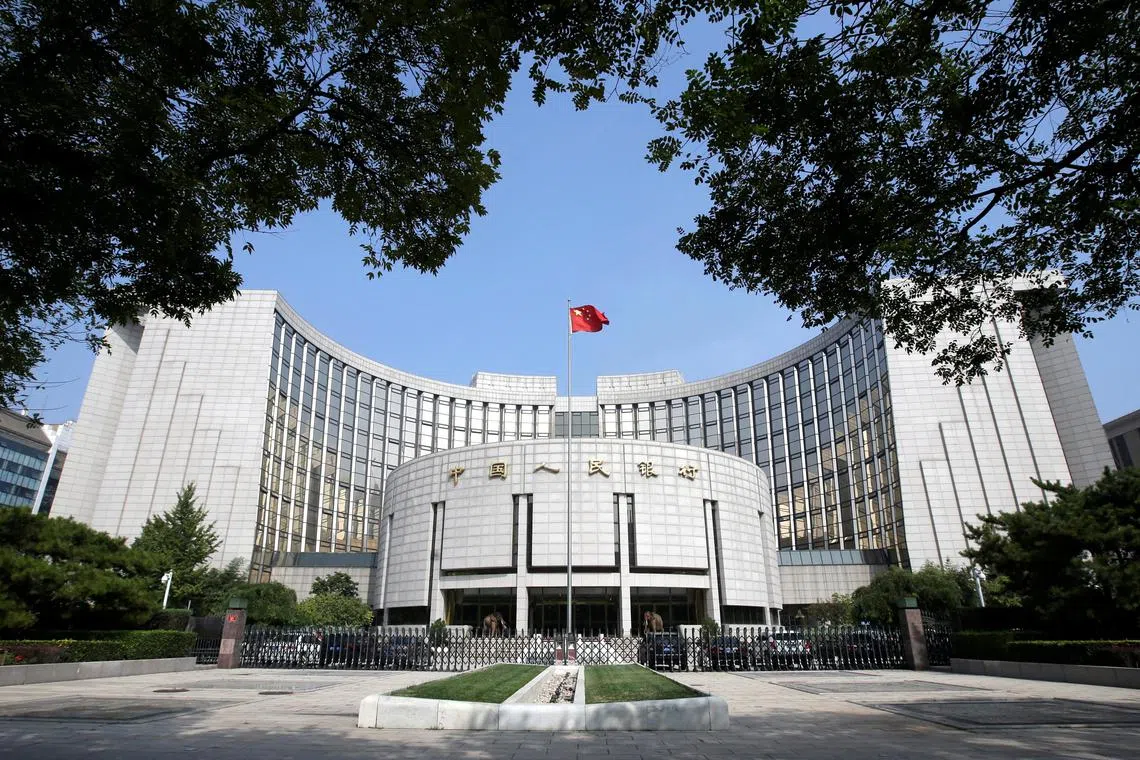China stimulus hopes rise as central bank cuts rate, plans briefing
Sign up now: Get ST's newsletters delivered to your inbox

China's central bank governor will hold a press conference on Sept 24 on financial support for economic development.
PHOTO: REUTERS
Follow topic:
BEIJING – China announced plans for a rare briefing on the economy by three top financial regulators just as it cut one of its short-term policy rates, fuelling speculation that the authorities are preparing to ramp up efforts to revive growth.
The authorities announced on Sept 23 that central bank governor Pan Gongsheng will hold a press conference on Sept 24 on financial support for economic development, alongside two other officials.
Minutes later, the People’s Bank of China (PBOC) lowered the 14-day reverse repurchase rate to 1.85 per cent from 1.95 per cent, as part of reductions initiated in July.
Taken together, the moves bolster expectations for the PBOC to lower rates, after the US Federal Reserve finally started cutting rates last week.
The yield on China’s 10-year government bonds fell one basis point to a fresh low of 2.03 per cent, a sign traders are pricing in more monetary stimulus.
In the foreign exchange market, the PBOC raised its daily reference rate for the renminbi to 7.0531 per US dollar, putting the key seven level in sight.
“I do expect the PBOC to cut the seven-day reverse repo rate as well as the reserve requirement ratio in the coming months,” said Pinpoint Asset Management president and chief economist Zhang Zhiwei, referring to the new benchmark policy rate.
The press conference on Sept 24 will give financial regulators a chance to “shed light on their policy stance”, he added.
Mr Pan used a similar briefing in January to announce a cut to the amount of money banks must hold in reserve – the RRR – two weeks ahead of time, as the authorities tried to halt a US$6 trillion (S$7.7 trillion) stock market rout.
The PBOC governor has displayed a more transparent approach to policy during his first year in the post as officials try to shore up confidence.
Still, a string of rate cuts in recent months has not done enough to stimulate an economy that expanded at the slowest pace in five quarters.
The years-long real estate crisis that has wiped out an estimated US$18 trillion in wealth from households has depressed appetite for spending and pushed China into its longest streak of deflation since 1999.
That means real interest rates – which are adjusted for changes in prices – have stayed elevated, weakening the impact of any moderate easing.
A plunge in revenue from land sales has also held back fiscal spending, leaving indebted local governments struggling to pay their bills and with little bandwidth to invest in growth-boosting projects.
Economists in a recent Bloomberg poll pinpointed enforcement of the housing rescue package China unveiled in May as the single most-impactful way officials can give the economy a kick.
So far, uptake has been weak, with only 29 of some 200 cities heeding the call to absorb the glut of excess housing.
“It is also needed for the PBOC to guide lower the interest rates on existing mortgages,” said Credit Agricole chief China economist Zhi Xiaojia, referring to Sept 23’s cut.
China has a window on Sept 25 to lower the cost of its one-year policy loans, which officials have downplayed in recent months in favour of short-term rates to guide the market.
That means the PBOC might opt to cut its new policy rate before making any change to the medium-term lending facility (MLF).
Underscoring the shift in sequence, the central bank in July cut the seven-day reverse repurchase rate days before it slashed the MLF by the most since April 2020.
“A 10 basis point cut alone is not sufficient to arrest the falling economic momentum,” said ANZ chief Greater China economist Raymond Yeung. “A bigger package is needed. Other policy measures in the tool box such as RRR cut, MLF cut and mortgage rate cut will likely be announced.” BLOOMBERG

